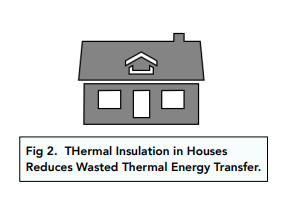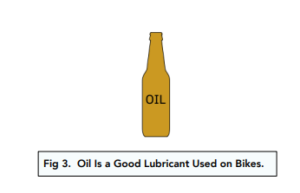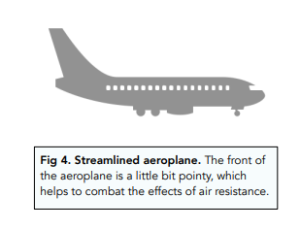Reducing Energy Waste (GCSE Physics)
Reducing Energy Waste
Increasing Efficiency
Efficiency
- We can increase efficiency in several ways. We can increase the efficiency of energy transfers in a few different ways: thermal insulation, lubrication and streamlining.
- 100% efficiency is usually impossible. It is normally impossible for an energy transfer to be 100% efficient. There is usually always some wasted heat energy in the form of heat / thermal energy. Sometimes the definition of ‘useful’ energy can change – e.g. some lights are designed to provide heat and light, so the heat energy is also useful!
Reducing Unwanted Energy Transfers
There are several ways in which we can reduce the amount of unwanted energy transfers:
- Thermal insulation. A common way in which energy is wasted is through thermal energy. For example, when a house is heated, energy can be transferred through the windows, doors and walls. In order to combat this, houses are often insulated and windows are double glazed.



Cooling a Building
Our homes are great examples are where we use thermal insulators.
When we heat up our homes, we want them to stay warm for as long as possible. However, the thermal conductivity of the doors, windows and walls can result in energy losses. In order to lessen the amount of thermal energy that escapes from our homes, we need to reduce thermal conductivity. This can be achieved in the following ways:
- Double glazed windows – by using double glazing, we are thickening the windows and therefore reducing their thermal conductivity. As the thermal conductivity decreases, the rate of thermal energy transfer will also decrease.



Investigating Thermal Insulators
Method
- Gather the equipment. For this experiment, you will need a beaker (with a lid) filled with hot water, a thermometer, a top pan balance, a stopwatch and different insulating materials.
- Measure the filled beaker’s mass. Place the beaker full of hot water onto a top pan balance. Make sure that the lid is on top of the beaker too. Record the mass in kilograms.
- Measure the water temperature. Use the thermometer to measure the temperature of the water in the beaker. Record this as the ‘initial temperature’, with the units in °C.
- Time for 5 minutes. Make sure that you have placed the lid on the beaker. Start the stopwatch and time for five minutes.
- Measure the water temperature. Once the five minutes are up, you can measure the temperature of the water again. Record this as the ‘final temperature’, with the units in °C.
- Calculate the temperature change. To find the change in temperature, do the calculation ‘initial temperature – final temperature’. Record this as the ‘temperature change’, with the units in °C.
- Repeat steps 2-6 with different insulators. For each experiment, make sure that you have the same mass of water and the same initial temperature. The only thing that should change is the material that you wrap around the beaker.
- Record your results in a table. The results table should look like this:

Energy waste refers to the loss of energy that occurs during the production, distribution, and use of electricity, gas, and other forms of energy. This energy is often lost as heat, light, or sound, which can contribute to environmental problems and increase energy costs.
Reducing energy waste is important for several reasons. Firstly, it can help to save money by reducing energy bills. Secondly, it can help to reduce carbon emissions, which can contribute to climate change. Finally, it can help to conserve natural resources, such as coal, gas, and oil, which are finite and will eventually run out.
There are many simple ways to reduce energy waste, including:
Turning off lights and appliances when they are not in use
Using energy-efficient light bulbs Insulating your home to prevent heat loss
Using a smart thermostat to control your heating and cooling
Setting your computer to “sleep” mode when you are not using it
Unplugging chargers and other electronics when they are not in use
To reduce energy waste in your home, you can take several steps, including:
Installing low-flow showerheads and toilets to reduce water waste
Replacing old appliances with energy-efficient models
Sealing air leaks around windows and doors to prevent heat loss
Planting trees or installing shading devices to reduce solar heat gain in the summer
Insulating your attic, walls, and floor to keep your home warm in the winter and cool in the summer
Energy waste can have a significant impact on the environment, as the energy that is lost often contributes to greenhouse gas emissions, which can contribute to climate change. Additionally, the production and transportation of energy sources, such as coal, gas, and oil, can lead to air and water pollution, habitat destruction, and other environmental problems.
Schools and communities can reduce energy waste by implementing energy-saving initiatives, such as:
Installing energy-efficient lighting and appliances
Encouraging the use of public transportation, biking, or walking instead of driving
Recycling and composting to reduce waste
Implementing an energy management program to monitor and reduce energy use
Hosting educational programs and events to raise awareness about the importance of reducing energy waste





Still got a question? Leave a comment
Leave a comment